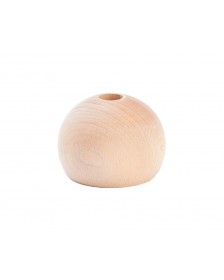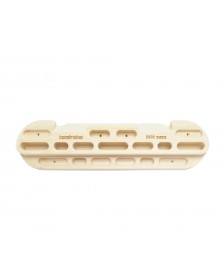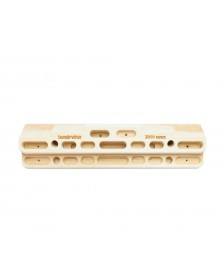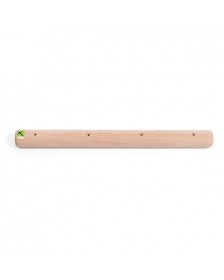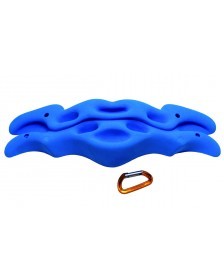Climbing can be demanding for your muscles and joints. Therefore it's a good idea to strengthen these through controlled exercises, specific and targeted training. Below are various products that can help you with the necessary training.
Climbing Equipment - Warm up and Strength Training
Climbing is a demanding sport to practice. As you climb, your entire body is at work from the tip of your finger to the very outer of your toe. As climbing has become a widespread sport practiced in climbing clubs throughout the year, all over the world, we have experienced a growing demand for easy-to-wear exercise equipment at home, giving you the opportunity to exercise at any time. We provide a diverse range of exercise equipment to cover both climbing warm-up, injury prevention and strength training. And we are constantly working to add more products to this category.
Training equipment for climbing
Both hangboards, finger warm-up remedies and training elastic bands are carefully selected and tested in the climbing gyms around the country. We make an effort to find products that are specially developed for climbers. Among other things, we sell both the Beastmaker 1000 and 2000 series, which are probably the two best-selling hangboards in the world.
Warming up and warming down
Start each - yes, each - workout by warming up. Climbing training (and hard climbing) can be tough for muscles, joints and tendons that are not designed for such loads; Make sure you take the time to do some light stretching, get all your joints moving and get your heart rate up, especially shoulders, fingers and hips are important. In addition to getting your body ready to perform, warming up allows your mind and your body to synchronize and significantly reduces the chances of injury.
Light stretching does not mean you have to challenge your agility, it is just three to five light stretches of 5 seconds per muscle group. The reason you should do this is to make your tendons and the membrane that sits around your muscles ready to perform.
It is just as important to get all your joints moving to make sure everything is sitting as it should. If a joint does not sit where it should, the muscles around the body part the joint is part of has, per reflex, reduced performance. The body does this naturally so it can avoid aggravating what is to blame for the joint not sitting where it should, e.g. an injury.
Of course, it is also important to get your heart rate up, not least because the heart will be ready to pump blood out to the muscles, but also because your arteries will be ready to expand, and allow more blood and oxygen to your muscles when you climb so you do not get as easily pumped.
Hangboards are not always the best warm-up tool, but if you use one anyway, we recommend that you only use the large jugs during the warm-up.
As a warm-down, we recommend that you traverse a few times on easy holds like jugs to allow your body to slowly go down in pace.
Strength training and endurance training
There are two types of muscle fibers, they are often called the fast and the slow muscle fibers, and yes, there is a small difference in the activation rate, but it is not very big. The real difference is that a "fast" type is activated when the "slow" type is no longer enough to provide the required power. This is because the slow fibers can perform for a long time, but they are not very strong, whereas the fast ones are very strong, but can not continue to perform for very long. That is, at low weights where the fast fibers are not needed, you can keep repeating an exercise, but when the weight becomes large enough that the fast ones are needed, you can suddenly only do a few repetitions.
What do you need that knowledge for? You can think of strength training and endurance training as fast-fiber training and slow-fiber training. So if you want to train your strength, you need to train the fast fibers with few repetitions (4-6) with high weight, and if you want to train endurance, you need to train the slow fibers with many repetitions (12-20) and low weight. Of course, you can also train climbing-specific endurance by climbing an easy route several times in a row without a break, traversing or climbing many boulder problems in a row.
BUT, it can also pay off to do strength-endurance training once in a while. In other words, a combination of the two where you train the ability to perform for a long time.As you might have guessed you do this with medium amount of reps with a medium weight.
Injury prevention training
If you climb often, ie around two to three times a week or more, it is important to do injury prevention training. But why is that? Well, when you climb you use certain muscles a lot, and it can make these muscles very strong in relation to the muscles that pull in the opposite direction. It can become a problem.
If we e.g. look at shoulder posture, we have two muscle groups we train a lot when we climb, the chest muscles and the broad back muscles, ie the wings. As these two muscle groups become stronger, they will also pull the shoulders forward as both muscle groups attach to the front of the shoulders. Not only does it look silly, but walking around this way for too long can lead to painful injuries.
To prevent this from happening, you train the muscles that are antagonistic, ie the muscles that pull the shoulders in the opposite direction. It is called antagonist training, and in this case it would mean training the muscles teres major, teres minor, infraspinatus and supraspinatus which all rotate the shoulder back.

















